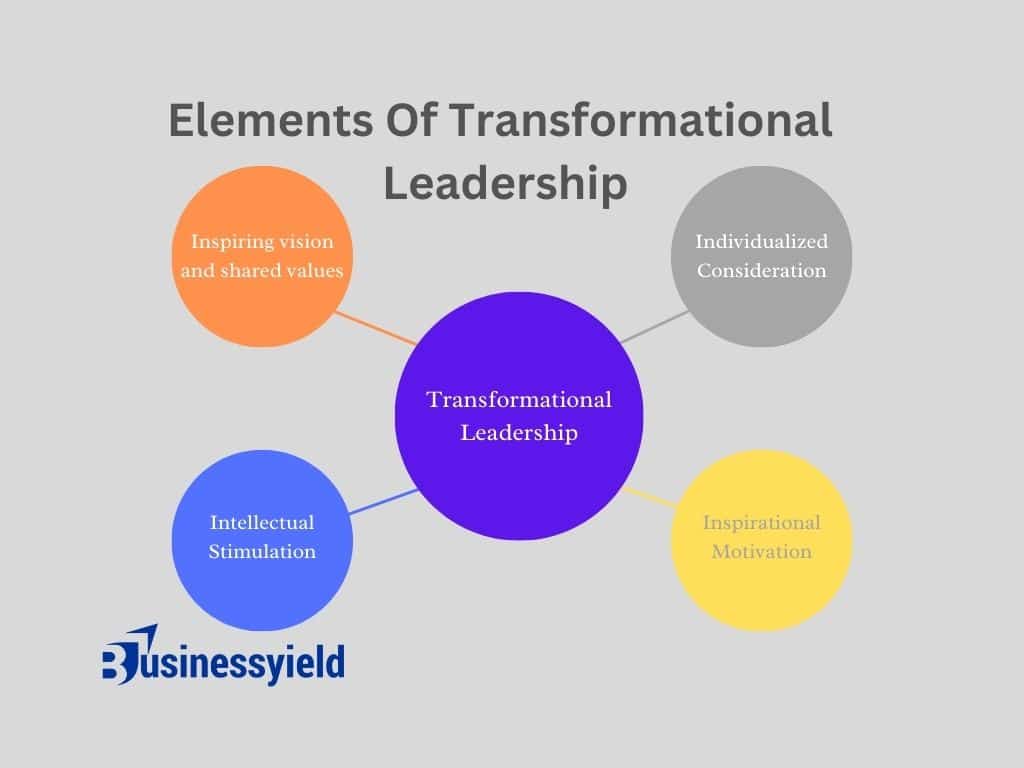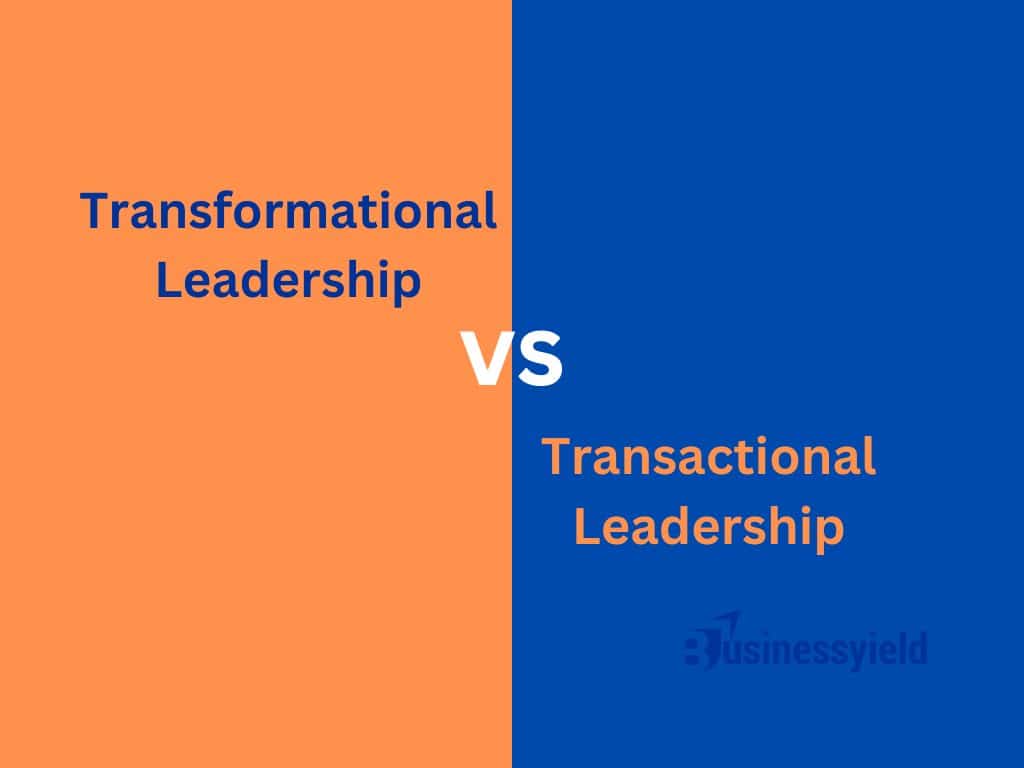In today’s fast-paced business world, being a successful leader goes beyond just meeting requirements. It involves motivating others, being flexible, and fostering a culture of progress. Let’s explore the captivating world of transformational leadership in modern business and delve into its true essence.
Key Takeaways
- Transformational leadership is a unique leadership style that inspires and motivates individuals to stretch themselves and improve their capabilities to achieve a common goal.
- The key elements of transformational leadership are idealized influence, individualized consideration, intellectual stimulation, and inspirational motivation.
What Is Transformational Leadership?
Transformational leadership is a powerful leadership style that can motivate and inspire individuals to make meaningful and positive changes. Some of the key traits of transformational leaders is their high levels of energy, enthusiasm, and passion. The leaders are not only attentive and engaged in the process, but they also prioritize the success of every member of the group. Now, what are the elements of transformational leadership?
Elements of Transformational Leadership

Transformational leadership involves inspiring vision and shared values. Picture yourself as a team member where every individual shares the same vision. It’s similar to orchestrating a symphony – every instrument playing a distinct part, yet blending to produce something remarkable. I had the opportunity to witness this firsthand while guiding a marketing team through a rebranding process. Through the art of storytelling and fostering a sense of unity, we were able to revolutionize not only our brand but the very fabric of our organization’s culture.
#2. Individualized Consideration
Transformational leadership involves identifying each team member as a unique and valuable individual and relating to each person as such. Each person is a valuable individual with their own set of strengths and abilities, not just a mere cog in a machine. This worked for myself and my team during our rebranding process. I identified the unique abilities of each individual and allowed them to function in their uniqueness. The result was mind-blowing; we experienced a two-fold increase in productivity. This personal touch is what sets transformational leaders apart.
#3. Intellectual Stimulation
Have you ever experienced a brainstorming session where ideas flowed effortlessly? That’s the beauty of being intellectually stimulated. Based on my experience as a team leader, creating an atmosphere that promotes curiosity and innovation resulted in groundbreaking campaigns. Transformational leaders go beyond mere management; they foster an environment that encourages constant learning and the generation of new ideas.
Read Also: THE IDEAL WORK ENVIRONMENT: Things That Make up an Ideal Work Environment
#4. Inspirational motivation
Do you recall a moment when a leader’s words inspired you to push beyond your limits? This demonstrates the profound effect of inspirational motivation. Guiding a sales team during difficult periods, I came to understand the impact of effective and tailored communication. Through effective motivation and empowerment, our team achieved and surpassed our targets.
You may also like: HOW YOU DEMOTIVATE YOUR EMPLOYEES: Signs Of Demotivation In A Workplace
The Impact of Transformational Leadership on Driving Change In Modern Business

The impact of transformational leadership in modern business is profound. Here’s how transformational leadership can drive change in your organization:
#1. Embracing the Era of Digital Transformation
In this era of rapid digital advancement, it is the visionary leaders who are leading the way in successfully navigating this transformative landscape. As the leader of a traditional retail business, I successfully navigated the transition into the digital realm. It went beyond simply embracing technology; it was about cultivating a change in mindset. Transformational leadership played a crucial role in our success as we navigated the digital landscape.
#2. Leading in Times of Crisis
During times of stormy weather, leaders who possess a transformative approach truly stand out. Guiding a team through an unexpected crisis made me realize the significance of remaining calm and taking decisive action. Through the implementation of transformative strategies during difficult periods, we successfully navigated the challenges and came out on the other side with a team that is now even more robust and adaptable.
Here’s a piece by Karen Semon on how transformational leadership drives change:
Transformational Leadership in Specific Business Contexts in The Modern World
Transformational Leadership in Remote Work Environments
The advent of remote work has revolutionized our approach to leadership. During my time as a team leader, it was essential to adapt transformational leadership to virtual environments to effectively manage my remote team. Through promoting transparent dialogue, acknowledging personal accomplishments, and cultivating a virtual environment of motivation, we successfully turned distance from a hindrance into an advantage. You can learn how to make your remote team feel appreciated with these tips.
In today’s world, there is a growing expectation for businesses to prioritize social responsibility. Being a leader in an eco-friendly product company, the integration of sustainability with transformational leadership had a profound impact. Through our commitment to aligning our vision with environmentally conscious values, we have not only earned the loyalty of our customers but have also made a meaningful contribution to a greater cause.
Customer-Centric Leadership
It is absolutely essential to be customer-centric in a world where customers have the power to amplify their voices. Through my experience leading a customer service team, I came to realize the incredible impact of prioritizing the customer above all else. Through fostering a strong focus on customer satisfaction within our team, we were able to not only address concerns effectively but also cultivate loyal supporters of our brand.
Developing Transformational Leaders
Leadership Development Programs
Leadership is an ongoing skill that requires constant development. Throughout my experience as a leadership coach, I have witnessed the profound effects that well-crafted leadership development programs can have. Effective leadership development programs (LDPs) provide the opportunity and guidance so employees—especially those in leadership positions—can develop the skills they need to manage their careers, lead others to success, and contribute great work to the organization. Through mentorship, coaching, and creating growth opportunities, organizations can develop a strong network of influential leaders who have the power to make a lasting impact.
Embarking on a leadership development journey can feel like navigating uncharted waters. Every organization faces its own set of challenges and aspirations, making it impossible to find a one-size-fits-all roadmap. Allow me to offer a unique viewpoint on how to navigate and shape leaders based on my extensive experience in guiding diverse teams towards achievement.
#1. Set objectives and understand your company’s priorities
As a leader in a dynamic startup, I encountered the constantly evolving landscape of growth aspirations. It was essential to establish clear objectives for our leadership development program. Were we preparing for growth, looking to reduce expenses, or addressing issues with employee morale?
It was a period of growth for us, requiring leaders who possessed an entrepreneurial spirit, strategic acumen, and a talent for innovation. By comprehending these priorities, we were able to customize the program to develop leaders who are capable of driving the company’s progress.
Understanding your company’s priorities and how they align with the capabilities and training needs of your leaders will allow for greater opportunities to target these needs within the context of your program.
#2. Defining Leadership in Your Organization’s Context
Leadership is not a concept that can be applied universally. In a company driven by technology, where personal influence holds as much weight as job titles, the task of defining leadership necessitated a thoughtful and intricate approach. By engaging with both established leaders and employees in influential positions, regardless of their formal titles, a comprehensive understanding was gained.
In order to steer clear of falling into the echo-chamber mentality, we made sure to carry out surveys that allowed us to gain insights from a wide range of perspectives regarding essential leadership qualities. The definition provided served as a solid basis for a more extensive leadership development initiative.
Leadership roles are typically defined as those that are integral to a company, whether that’s inspiring team members, growing brand awareness, or helping employees succeed. You may limit your focus to those with formal leadership roles, or look further afield to those who have a lot of influence but not the corresponding job title.
#3. Evaluate Current Leadership Based on Criteria
A realistic assessment of current leaders is crucial for the effectiveness of any leadership development program. Through the implementation of a comprehensive 360-degree development program, we were able to gather valuable insights into the perception of leaders by their peers, direct reports, and managers. By comparing scores against industry benchmarks, we were able to maintain a high standard and avoid complacency.
Leaders who aim for excellence find that a realistic comparison to top performers or industry standards can be a powerful motivator. The text was a driving force for ongoing improvement instead of accepting average results.
#4. Create a Customized Development Program
Throughout my experience, following the 70-20-10 rule proved to be quite effective, although the intricacies required careful attention. It became crucial to identify the most suitable experience for leaders. We have implemented rotational programs for emerging leaders, which provide them with the opportunity to gain exposure to various departments within the organization. This helps them develop a well-rounded understanding of the organization as a whole.
Senior leaders were actively involved in shaping the training and experiences, which brought a strategic element to the process. The program was carefully designed to align with the company’s long-term vision, ensuring that leaders were not only trained for the present but also prepared for future challenges.
#5. Creating Personal Development Plans With Leaders

When it comes to leadership development, a thoughtful approach is what guides the journey and leads to meaningful transformation. Based on my experiences, I strongly urge organizations to navigate their paths, developing leaders who go beyond mere management and instead inspire and create lasting change.
For your current crop of leaders, you might create personal leadership development plans tailored to the specific qualities they need in their role and their current strengths and weaknesses. These plans should only develop personal growth and not be seen or used as corrective measures. If you’re lucky to have talented leaders, emphasize the importance of building on strengths. Standing still means getting overtaken at some point, so leaders should focus on remaining at the top of their field and being a beacon for other employees in their organization.
Ethical Leadership
Honesty and ethical behavior are essential qualities for successful leadership. Having experience as a leader in a highly regulated industry, I have successfully managed the ethical aspects of decision-making. Leaders who bring about transformation prioritize ethical behavior, which in turn sets a standard for the entire organization.
I have created a checklist for developing transformational leadership skills. By carefully following these guidelines, you’ll experience significant change, not just among your team, but within you as well:
Checklist For Developing Transformational Leadership Skills
Challenges and Criticisms Of Transformational Leadership in Modern Business
Every leadership style comes with its own set of challenges. Recognizing and addressing resistance to change is crucial for success. The application of transformational principles proved invaluable in effectively managing the concerns of both teams and cultivating a sense of unity within the newly merged entity.
Criticisms of Transformational Leadership
While critics may have their arguments, the power of experience cannot be denied. By taking into account constructive feedback about being overly idealistic, I have discovered that adopting a more balanced and realistic approach is essential for fostering transformational leadership. It’s not about grand aspirations; it’s about motivating realistic and attainable objectives.
Transformational Leadership vs Transactional Leadership

It’s worth noting that leaders are not limited to just one leadership style. Combining different approaches can often lead to improved organizational outcomes. Extensive research has been conducted on two leadership styles: transformational and transactional. It is worth noting that leaders can demonstrate different levels of both styles.
The foundation of transactional leadership lies in the reciprocal interactions between the leader and every individual employee. Employees are rewarded for achieving specific goals, which helps to motivate and encourage them. A skilled transactional leader has a keen ability to promptly acknowledge and reward achievements. Team members are usually assessed and provided with feedback based on predetermined performance criteria in this leadership style. Workers are not typically encouraged to think creatively about their assigned tasks.
Transformational leaders have the ability to inspire employees on a deeper level, going beyond mere exchanges and rewards. This approach has the potential to enhance a team’s intrinsic motivation by effectively communicating the value and purpose behind the organization’s goals.
The transformational leadership style encourages employees to go above and beyond their usual duties, driven by a shared vision. On the other hand, transactional leadership primarily relies on external rewards to motivate employees to complete specific tasks. Mastering the art of balancing these different styles can greatly enhance a leader’s ability to achieve their maximum potential.
Read more: INNOVATION LEADERSHIP STYLES AND CHARACTERISTICS
Future Trends and Adaptations in Transformational Leadership
Emerging Trends in Transformational Leadership
Looking ahead, the integration of AI and technology is bound to happen. Analyzing data allows AI to pinpoint areas for transformation, but the unique perspective and personal touch of a transformational leader are invaluable and cannot be replicated. It’s all about embracing new tools while maintaining the core principles of leadership.
Continuous learning and adaptability are crucial skills to have in today’s ever-changing world.
Change is the only constant, and adaptability is a key trait of transformational leaders. In today’s fast-paced world, staying ahead requires leaders who value continuous learning. Organizations can effectively navigate uncertainties by fostering a culture of adaptability, enabling them to respond with resilience.
In Conclusion
In the tapestry of modern business, transformational leadership stands out as the driving force behind success. It goes beyond just leading; it’s about inspiring, adapting, and making a lasting impact. For both experienced leaders and those aspiring to become one, embracing the transformative journey is essential, as it represents the future of leadership.
- LEADERSHIP DEVELOPMENT: Process, Strategies & Importance
- LEADERSHIP STYLES: 7 Most Effective Styles 2023
- CHARISMATIC LEADERSHIP: Benefits of Charismatic Leadership
- LEADERSHIP THEORIES: What Every Leader Needs To Know
- Mastering the Art of Strategic Leadership: A Comprehensive Guide to Developing Essential Skills for Success






